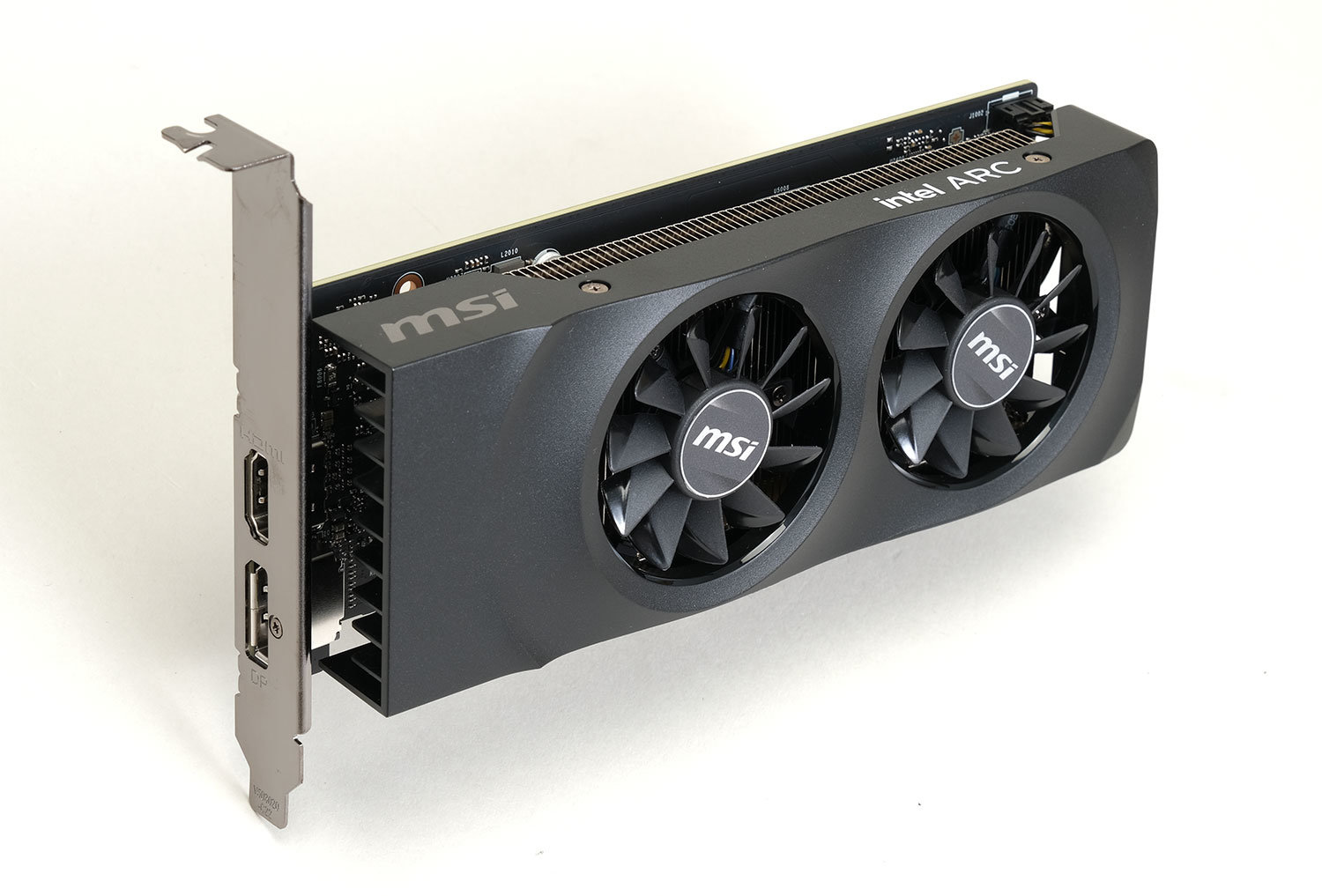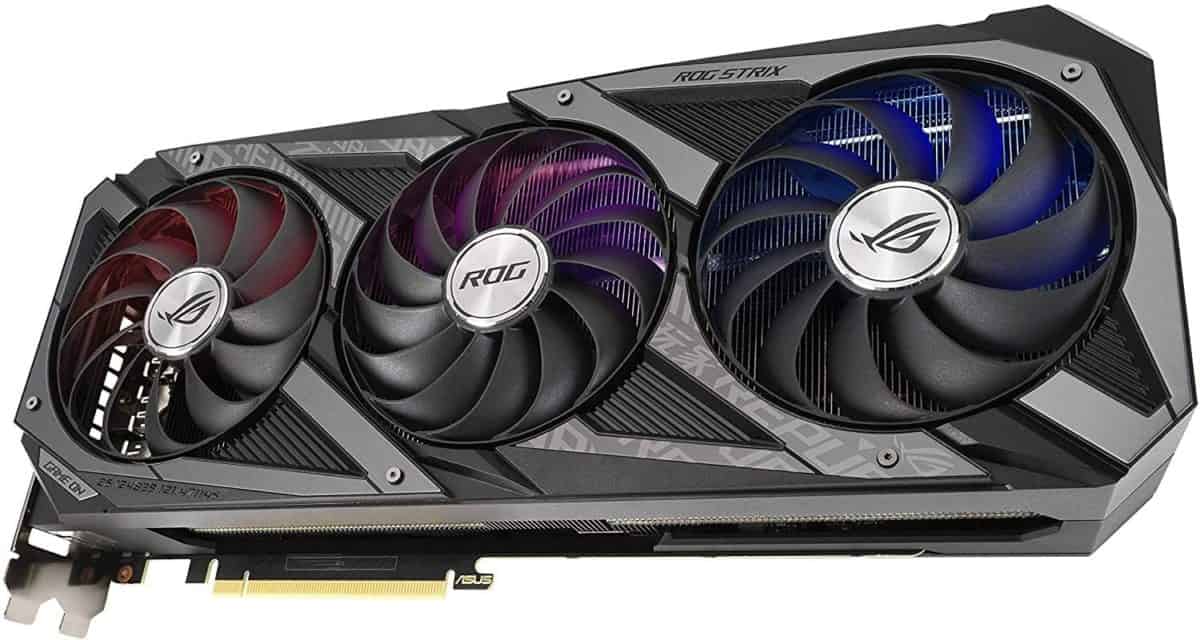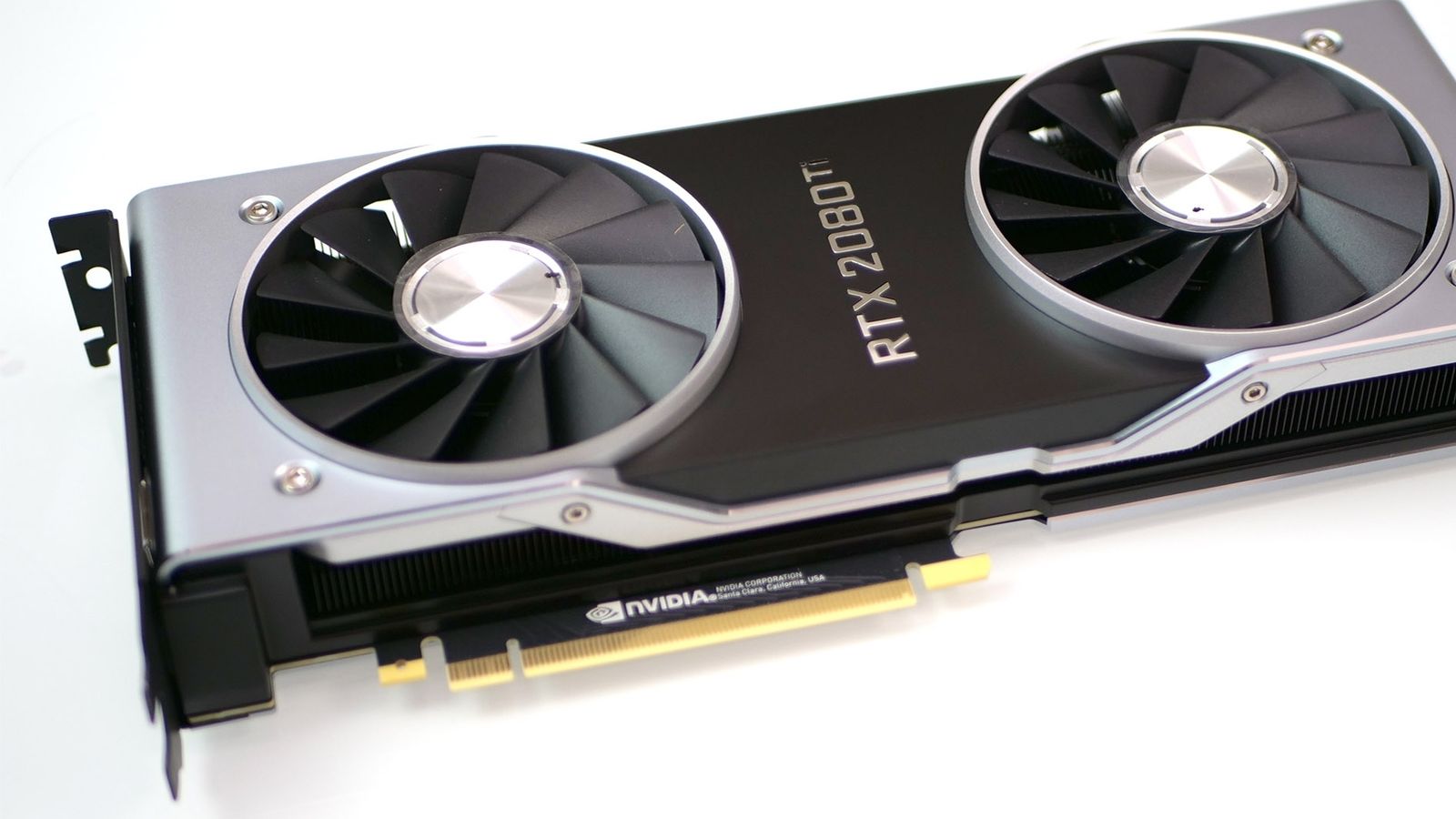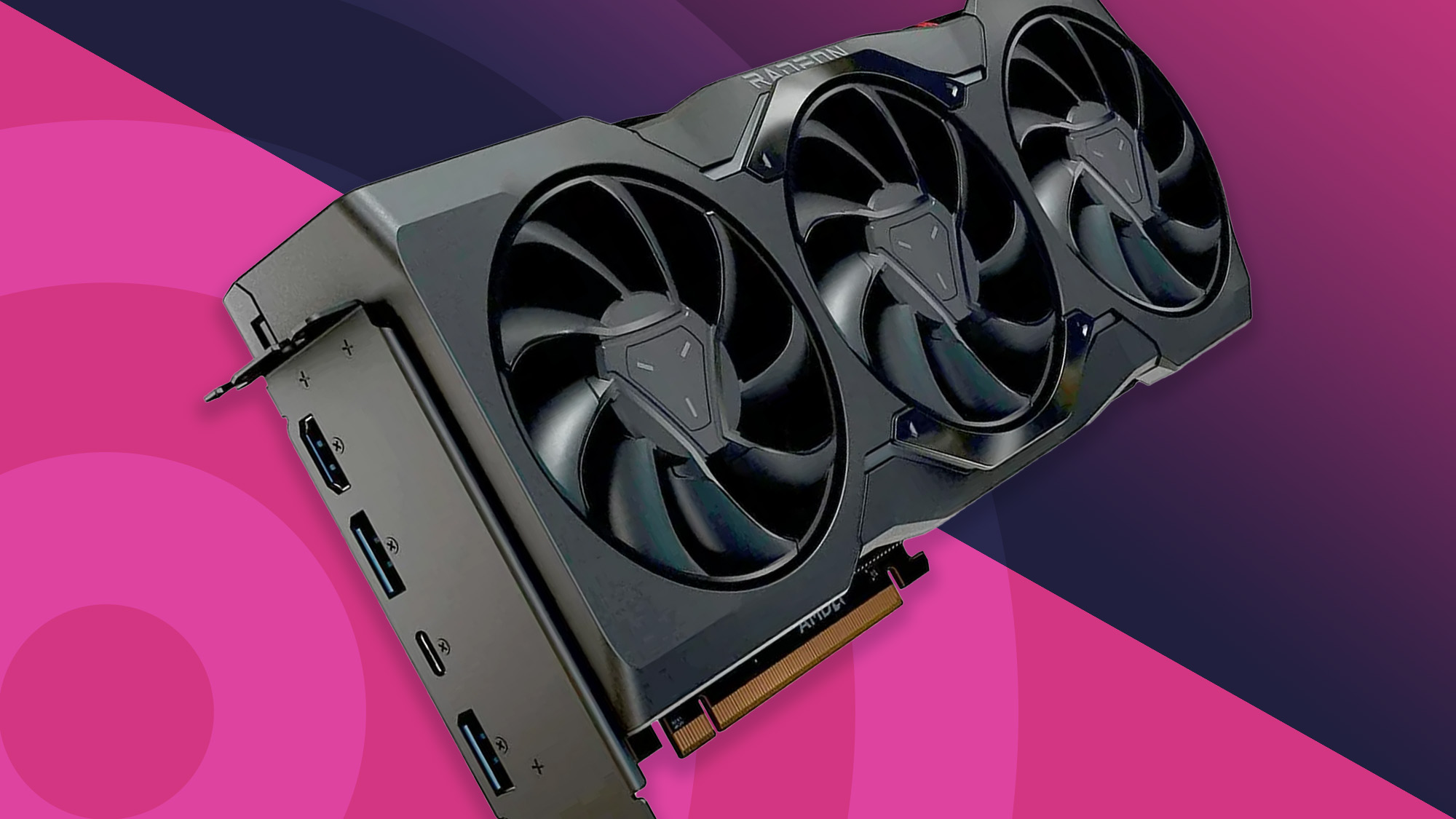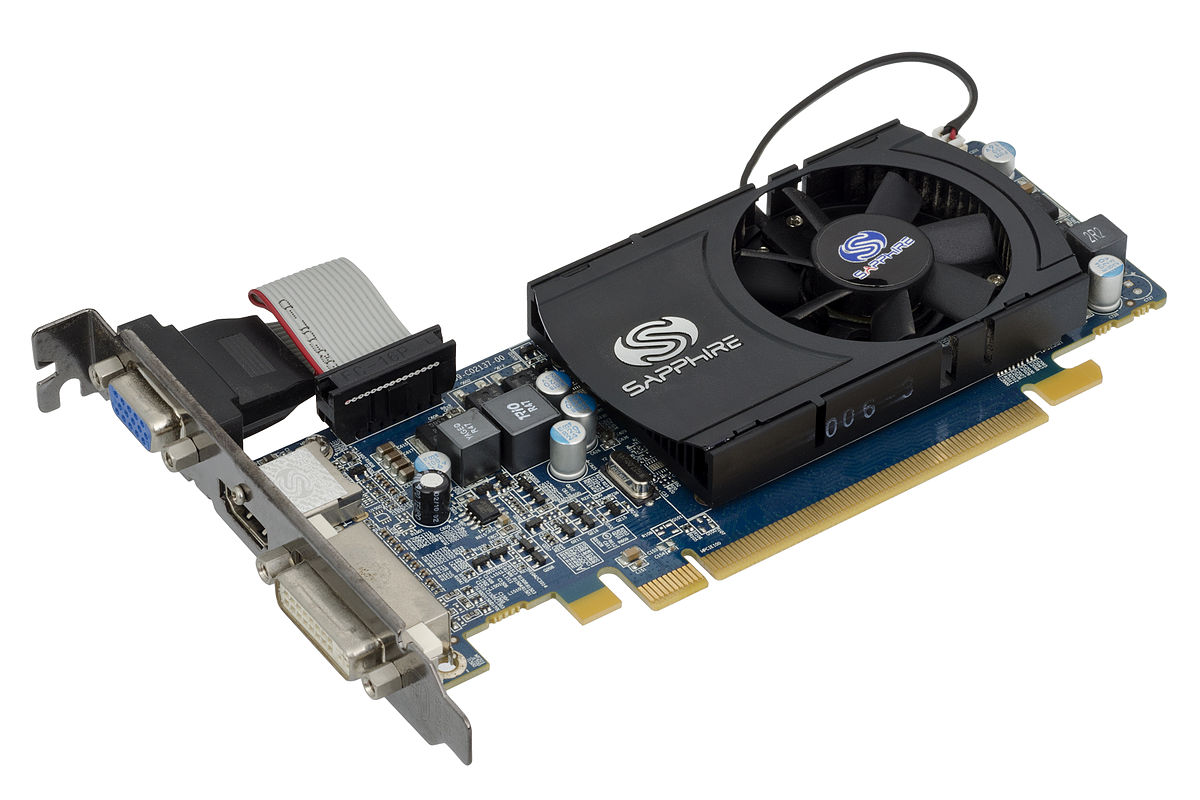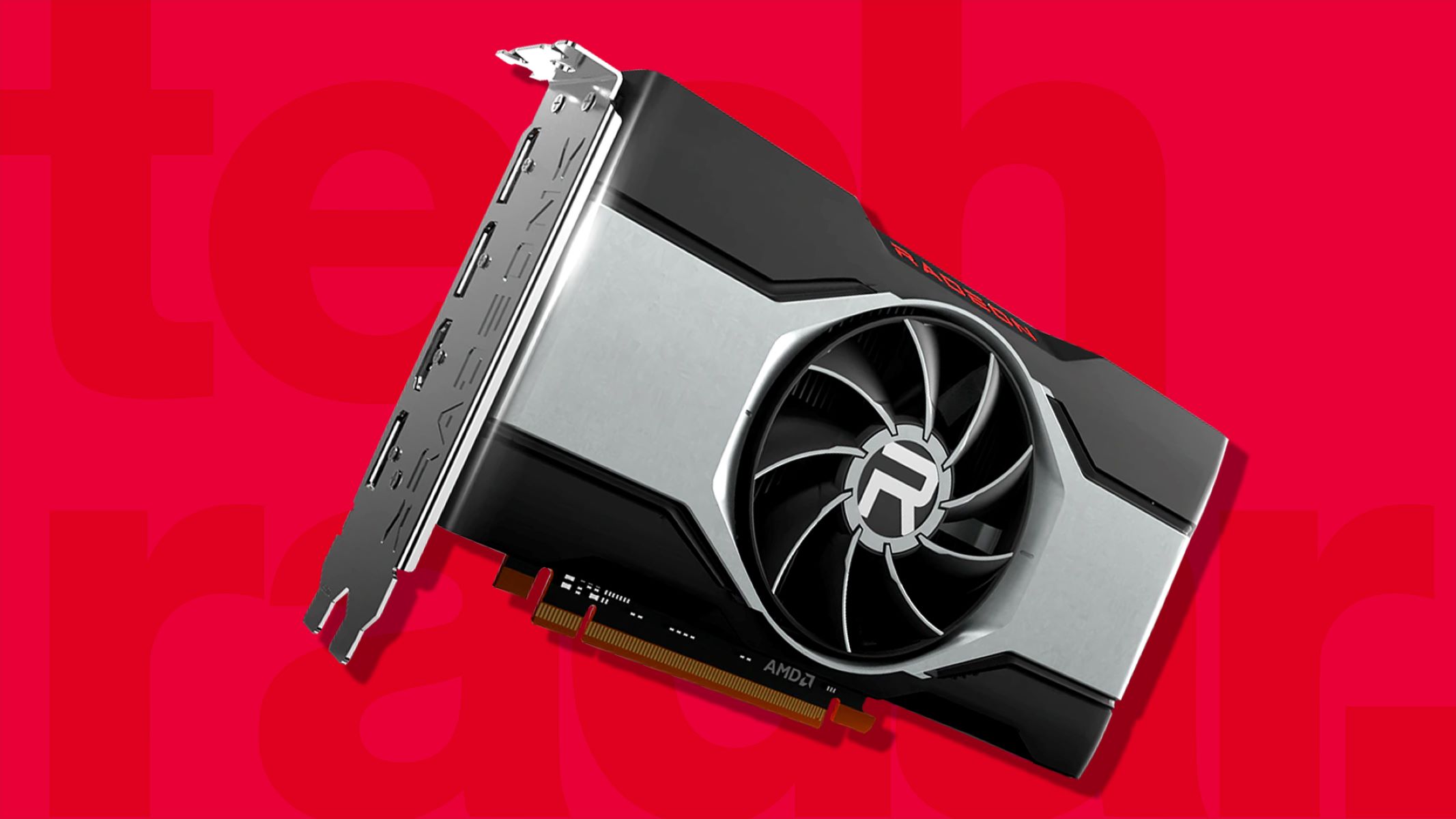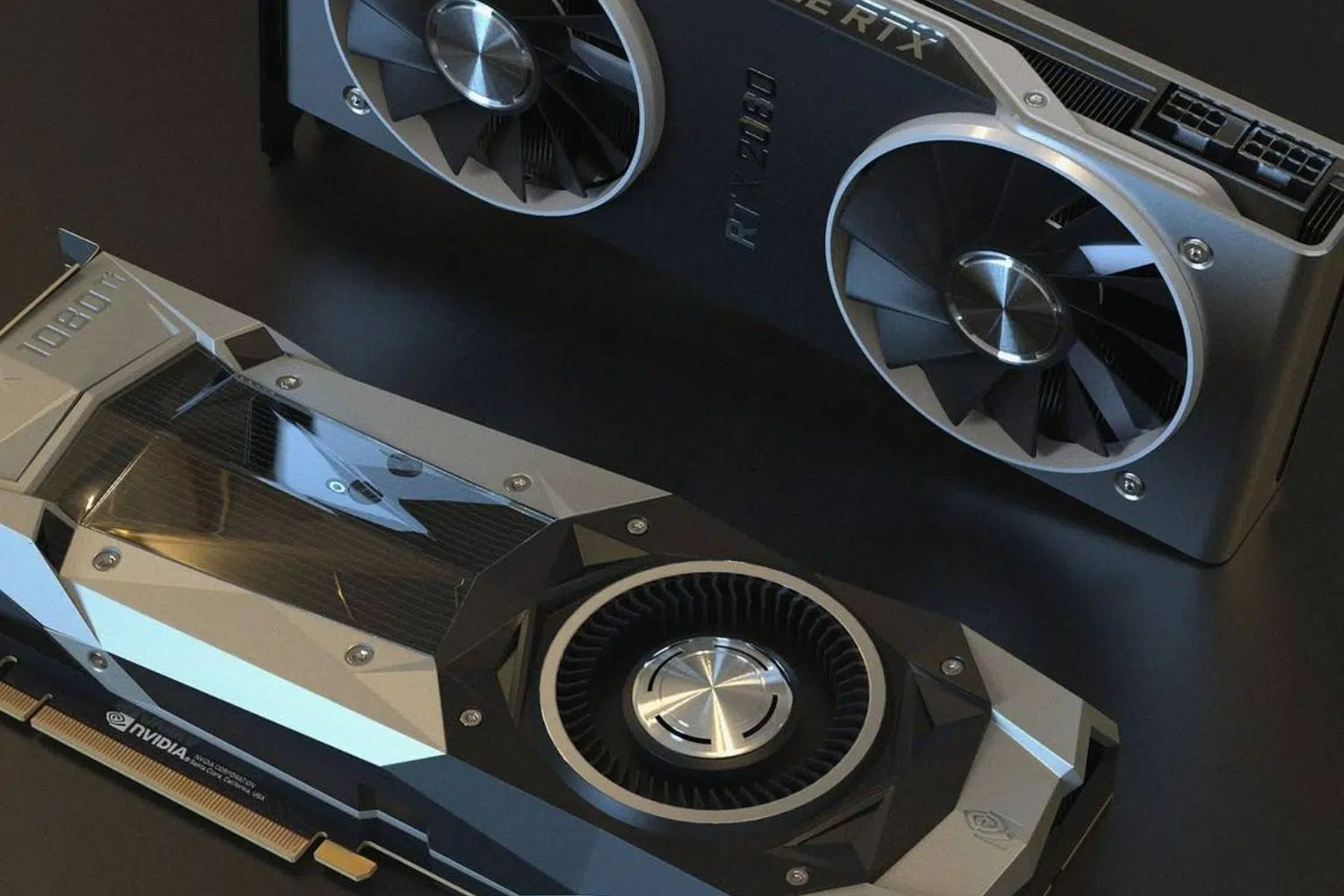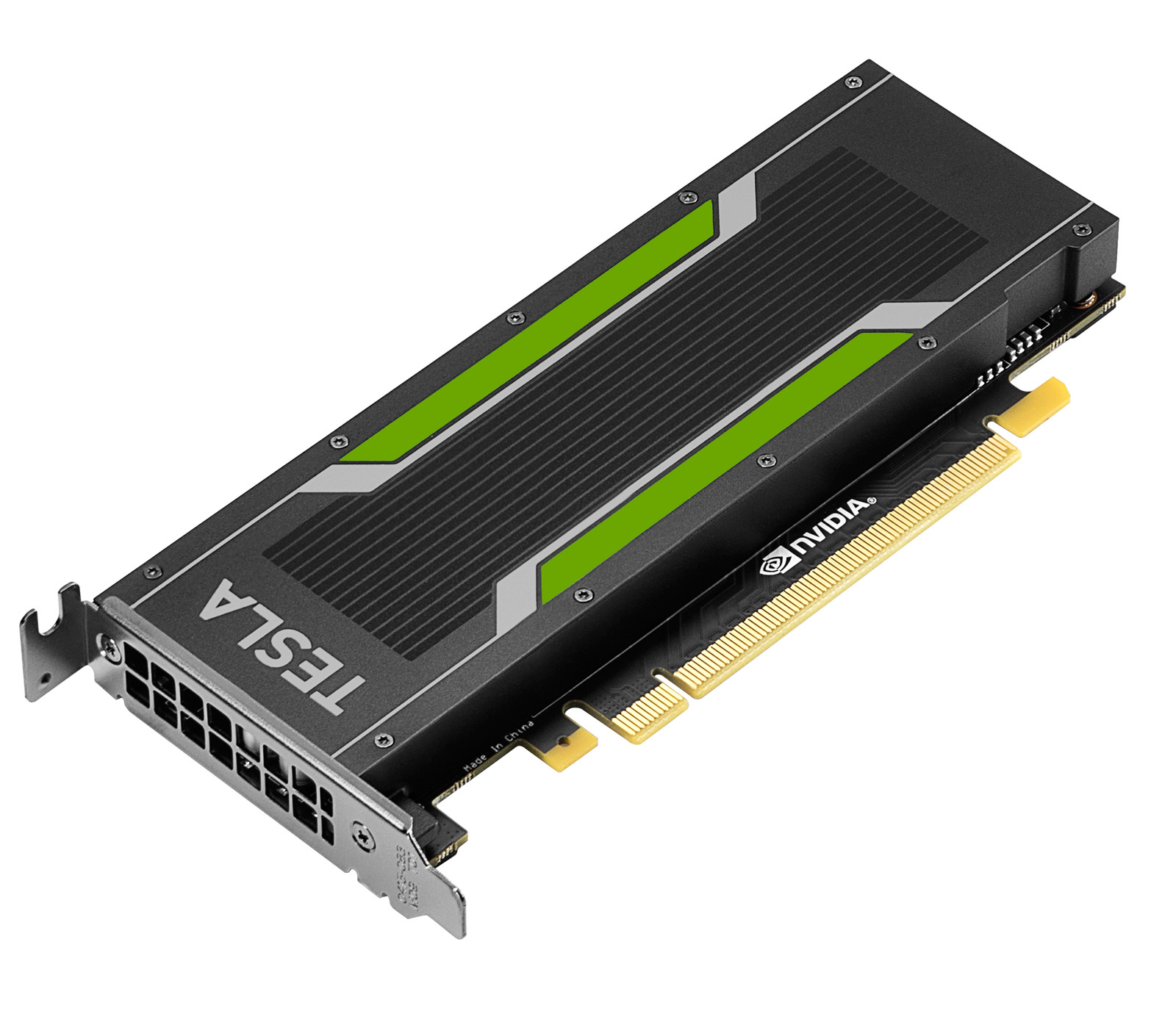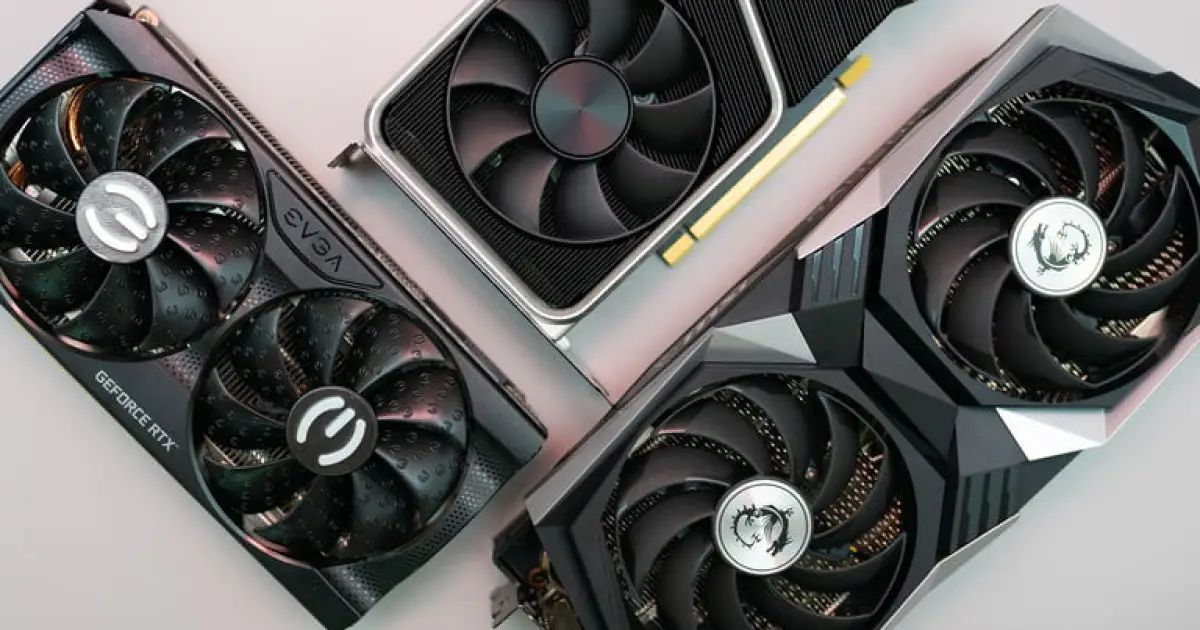Introduction
A low profile graphics card is a specialized piece of hardware designed to provide high-quality graphics processing capabilities to computers with limited space. It offers a compact form factor that allows it to fit into slim cases or small form factor (SFF) systems without sacrificing performance.
For many users, particularly those who use their computers for gaming, graphic design, or video editing, having a powerful graphics card is crucial. However, traditional full-size graphics cards may not be compatible with smaller computer cases, hindering the ability to upgrade or optimize graphics performance. This is where low profile graphics cards come into play.
Low profile graphics cards are specifically engineered to meet the demands of users who require high-quality graphics processing power in a smaller form factor. They offer a range of benefits, including enhanced visual performance, improved power efficiency, and compatibility with limited space configurations.
In this article, we will explore the definition of a low profile graphics card, the benefits of using one, the differences between low profile and full-size graphics cards, factors to consider when choosing a low profile graphics card, installation and compatibility considerations, examples of popular models, and tips for optimizing performance with a low profile graphics card.
Whether you are a casual gamer looking to upgrade your computer’s graphics capabilities or a professional designer in need of a compact yet powerful graphics solution, understanding the world of low profile graphics cards is essential. So, let’s delve into the details and discover the advantages and considerations when it comes to these specialized pieces of hardware.
Definition of a Low Profile Graphics Card
A low profile graphics card, as the name suggests, is a type of graphics card that has been designed to have a smaller form factor than a traditional full-size graphics card. It is specifically created to fit into computers with limited space, such as slim cases or small form factor (SFF) systems.
Low profile graphics cards are characterized by their reduced height and length compared to standard graphics cards. They are usually slim and compact, allowing them to easily fit into tight spaces. This compact design makes them ideal for use in small form factor PCs, media center computers, or slim gaming consoles.
Despite their smaller size, low profile graphics cards still pack a punch when it comes to performance. They feature dedicated graphics processing units (GPUs) that are designed to handle complex visual tasks, including gaming, video editing, and graphic design. These GPUs have their own memory and processing power, relieving the strain on the computer’s main processor and providing smoother and more responsive graphics performance.
Low profile graphics cards connect to the computer’s motherboard using a PCIe (Peripheral Component Interconnect Express) slot. This allows them to communicate with the rest of the system, transmitting data and instructions between the GPU and the computer’s CPU.
It’s important to note that low profile graphics cards are not one-size-fits-all. Different manufacturers offer various models with varying levels of performance, features, and compatibility. So, when considering a low profile graphics card, it’s essential to choose one that fits your specific needs and requirements.
Now that we have a better understanding of what defines a low profile graphics card, let’s explore the benefits of using one in the next section.
Benefits of Using a Low Profile Graphics Card
Using a low profile graphics card offers several benefits, making it a valuable addition to your computer setup, especially if you have limited space. Let’s explore some of the advantages that come with using a low profile graphics card:
1. Space Efficiency: The most obvious advantage of a low profile graphics card is its compact size. It allows you to upgrade your graphics capabilities in systems with small form factors or slim cases that cannot accommodate full-size graphics cards. This is particularly useful in situations where space is limited or if you prefer a sleek and clean aesthetic for your computer setup.
2. Enhanced Visual Performance: Despite their smaller size, low profile graphics cards are designed to deliver impressive visual performance. They feature dedicated GPUs with their own memory and processing power, allowing them to handle graphically demanding tasks much more efficiently than integrated graphics solutions. This results in smoother gameplay, faster rendering of images and videos, and improved overall graphics performance.
3. Power Efficiency: Low profile graphics cards are engineered to be power-efficient. They are optimized to deliver high performance without consuming excessive amounts of power. This not only helps in reducing energy consumption but also keeps the overall heat generated by the system to a minimum. As a result, you can enjoy improved graphics performance without worrying about excessive power consumption or excessive heat buildup inside your computer.
4. Compatibility: Low profile graphics cards are designed to be compatible with a wide range of systems, including small form factor PCs, media center computers, and slim gaming consoles. They often come with multiple connectivity options, such as HDMI, DisplayPort, and DVI, to ensure compatibility with different display devices. This makes it easier to integrate them seamlessly into your existing setup without the need for additional modifications.
5. Upgradability: One of the significant advantages of low profile graphics cards is their upgradability. If you have a compact system with limited space, you may think that your options for upgrading your graphics capabilities are restricted. However, with a low profile graphics card, you can easily swap out your existing card for a more powerful one when needed, allowing you to keep up with the latest graphics-intensive applications and games.
Overall, using a low profile graphics card provides you with a space-efficient and powerful graphics solution, enabling you to enjoy enhanced visual performance without compromising on space or power efficiency. Now that we have explored the benefits of using a low profile graphics card, let’s move on to understanding the differences between low profile and full-size graphics cards.
Differences Between Low Profile and Full-Size Graphics Cards
Low profile graphics cards and full-size graphics cards differ in several aspects, including size, form factor, power requirements, and compatibility. Understanding these differences can help you make an informed decision when choosing the right graphics card for your system. Let’s explore the distinctions between low profile and full-size graphics cards:
1. Size and Form Factor: The most apparent difference between low profile and full-size graphics cards is their physical size. Low profile graphics cards have a smaller form factor, making them ideal for systems with limited space such as small form factor PCs or slim cases. In contrast, full-size graphics cards are larger and may require spacious computer cases to accommodate them.
2. Power Requirements: Full-size graphics cards generally require more power due to their larger size and higher performance capabilities. As a result, they often require a separate power connection, such as an additional PCIe power connector from the power supply unit. On the other hand, low profile graphics cards are designed to be power-efficient and typically draw power directly from the motherboard’s PCIe slot, eliminating the need for a separate power connection.
3. Cooling Solutions: Full-size graphics cards tend to have larger cooling solutions, such as multiple fans and larger heat sinks, to dissipate the heat generated by the powerful GPUs. This helps to maintain optimal operating temperatures and prevent overheating. Low profile graphics cards, due to their smaller size, may have compact cooling systems with single fans or passive cooling solutions, which might not provide the same level of cooling efficiency as their larger counterparts.
4. Performance: Full-size graphics cards often offer higher performance capabilities compared to low profile graphics cards. They often feature more powerful GPUs, higher memory capacities, and wider memory interfaces, which results in better gaming performance, faster rendering, and smoother image and video playback. However, low profile graphics cards have come a long way in terms of performance and can still provide impressive graphics processing power for most applications and games.
5. Compatibility: Full-size graphics cards may not be compatible with small form factor PCs or slim cases due to their larger dimensions. They may require specific expansion slots or additional space within the computer case for proper installation. On the other hand, low profile graphics cards are designed specifically for compatibility with smaller systems and are more likely to fit into limited space configurations without any issues.
Consider your specific requirements, available space, and power capabilities when deciding between a low profile and full-size graphics card. If space is a concern, or you have a small form factor PC, a low profile graphics card might be the better choice. However, if you require maximum performance and have ample space in your computer case, a full-size graphics card could be the ideal option.
Now that we have explored the differences between low profile and full-size graphics cards, let’s delve into the factors to consider when choosing a low profile graphics card in the next section.
Factors to Consider When Choosing a Low Profile Graphics Card
Choosing the right low profile graphics card requires careful consideration of several factors to ensure it meets your specific needs and requirements. Here are some key factors to consider when selecting a low profile graphics card:
1. Power Requirements: Determine the power supply capacity of your system and ensure it can provide sufficient power for the graphics card you choose. Low profile graphics cards typically draw power directly from the motherboard’s PCIe slot, but some models may require additional power connections. Make sure your power supply has the necessary connectors and wattage to support the graphics card.
2. Performance Needs: Assess your performance requirements based on the intended usage of the graphics card. If you plan to engage in graphically demanding tasks such as gaming or video editing, consider a low profile graphics card with a more powerful GPU, higher memory capacity, and wider memory interface. On the other hand, if you primarily use your computer for everyday tasks and light gaming, a less powerful graphics card may suffice.
3. Compatibility: Ensure that the low profile graphics card you choose is compatible with your system’s form factor and available expansion slots. Check the dimensions of the graphics card to ensure it fits within your computer case without any clearance issues. Additionally, verify the compatibility of the graphics card with your operating system and the software applications you intend to use.
4. Connectivity Requirements: Determine the specific display connectivity options you require, such as HDMI, DisplayPort, or DVI. Most low profile graphics cards offer multiple connectivity options, but it’s essential to ensure that the graphics card you choose supports the appropriate ports for your display devices.
5. Cooling and Thermal Design: Pay attention to the cooling system of the low profile graphics card, particularly if you plan to engage in demanding tasks or use the card in a system with limited airflow. Look for cards with efficient cooling solutions, such as heatsinks and fans, to ensure optimal operating temperatures and avoid overheating issues that can affect performance and longevity.
6. Budget: Set a budget for your graphics card purchase and consider the cost-to-performance ratio. Low profile graphics cards come in a range of price points, and it’s important to find the right balance between your budget and the performance capabilities you require. Research different models and compare their features, performance benchmarks, and prices to make an informed decision.
7. Reviews and Recommendations: Read reviews and seek recommendations from trusted sources to gather insights on the reliability, performance, and user experiences of different low profile graphics cards. This can help you gauge the overall quality and suitability of a particular graphics card model before making a purchase.
By considering these factors, you can select a low profile graphics card that aligns with your system’s capabilities, performance needs, and budget. Take the time to research and compare different models to ensure a well-informed decision that will meet your requirements. Next, we will discuss installation and compatibility considerations for low profile graphics cards.
Installation and Compatibility Considerations for Low Profile Graphics Cards
Installing a low profile graphics card requires careful consideration of compatibility and proper installation procedures. Here are some important factors to consider when installing and ensuring compatibility for a low profile graphics card:
1. Case Size and Clearance: Measure the available space in your computer case to ensure it can accommodate the dimensions of the low profile graphics card you intend to install. Pay attention to the card’s height, length, and width to ensure that it fits properly without any clearance issues with other components or obstacles within the case.
2. PCIe Slot Compatibility: Verify that your computer’s motherboard has a compatible PCIe slot for the low profile graphics card. Most low profile graphics cards utilize a PCI Express x16 slot, but it’s important to check the specific requirements of the card and ensure it matches the available slots in your system. Some low profile graphics cards may require a different size or type of PCIe slot, so make sure to read the specifications of both your motherboard and the graphics card.
3. Power Supply Capacity: Check the power supply unit (PSU) in your system to ensure it has sufficient capacity to support the low profile graphics card. While low profile cards typically draw power directly from the motherboard’s PCIe slot, some higher-end models may require additional power connections. Make sure your PSU has the necessary wattage and connectors to provide adequate power to the card without overloading the system.
4. Driver and Software Updates: Before installing the low profile graphics card, ensure that you have the latest drivers and software updates for it. Visit the manufacturer’s website to download the most recent drivers specifically designed for your graphics card model and your operating system. Installing the latest drivers will ensure optimal performance and compatibility with your system.
5. Cooling and Airflow: Consider the cooling capabilities and overall airflow within your computer case. Pay attention to the cooling solution on the low profile graphics card, such as heatsinks and fans, to ensure efficient heat dissipation. Optimize the airflow within your case by ensuring proper cable management and the use of additional case fans if necessary. Adequate cooling is essential to maintain optimal operating temperatures and prevent overheating, which can negatively impact performance and reliability.
6. BIOS and UEFI Settings: Check the BIOS or UEFI settings of your system to ensure compatibility with the low profile graphics card. Some motherboards may require adjustments to the BIOS/UEFI settings, such as enabling PCIe compatibility or adjusting the primary graphics card settings, to properly recognize and utilize the low profile graphics card. Refer to the motherboard’s manual or consult the manufacturer’s support resources for specific instructions.
7. Physical Installation: Follow the manufacturer’s instructions for physically installing the low profile graphics card into your computer case. Take precautions to handle the card with care and to avoid static electricity discharge that could damage sensitive components. Ensure that the card is firmly seated in the PCIe slot and that any securing mechanisms are properly engaged.
By considering these installation and compatibility considerations, you can ensure a successful installation and optimal performance of your low profile graphics card. Take your time and refer to the manufacturer’s instructions and resources throughout the process to ensure a smooth and hassle-free installation. In the next section, we will explore examples of popular low profile graphics card models.
Examples of Popular Low Profile Graphics Card Models
There are several popular low profile graphics card models available in the market, each offering varying levels of performance, features, and compatibility. Let’s explore a few examples of popular low profile graphics card models:
1. NVIDIA GeForce GT 1030 Low Profile: The NVIDIA GeForce GT 1030 Low Profile is a budget-friendly option that offers excellent performance for casual gaming and multimedia tasks. It features 2GB of GDDR5 memory, a small form factor design, and low power consumption. This card is ideal for small form factor systems and can handle popular games at 1080p resolution with moderate settings.
2. AMD Radeon RX 5500 XT Low Profile: The AMD Radeon RX 5500 XT Low Profile is a mid-range graphics card that offers impressive performance for gaming and content creation. It features 4GB or 8GB of GDDR6 memory, efficient power consumption, and support for AMD’s advanced features such as Radeon Boost and Radeon Anti-Lag. This card brings powerful performance to compact systems and can handle modern games at 1080p resolution with high settings.
3. ASUS GeForce GTX 1650 Low Profile: The ASUS GeForce GTX 1650 Low Profile is a compact graphics card that offers a balance between performance and power efficiency. It features 4GB of GDDR6 memory, a small form factor design, and NVIDIA’s Turing architecture for improved gaming performance. This card is suitable for small form factor systems and can handle modern games at 1080p resolution with medium to high settings.
4. MSI GeForce GTX 1050 Ti Low Profile: The MSI GeForce GTX 1050 Ti Low Profile is a reliable graphics card that delivers impressive performance for gaming and multimedia tasks. It features 4GB of GDDR5 memory, a compact design, and NVIDIA’s Pascal architecture for efficient power consumption. This card is ideal for small form factor PCs and can handle games at 1080p resolution with medium to high settings.
5. EVGA GeForce GT 710 Low Profile: The EVGA GeForce GT 710 Low Profile is an entry-level graphics card designed for basic computing tasks and multimedia applications. It features 2GB of DDR3 memory, a compact and low-profile design, and low power consumption. This card is suitable for upgrading older systems with integrated graphics and provides an enhanced visual experience for everyday computing tasks.
These are just a few examples of popular low profile graphics card models available in the market. It’s important to research and compare different models based on your specific requirements, budget, and system compatibility to find the best fit for your needs.
Now that we have explored popular low profile graphics card models, let’s move on to the next section where we will provide tips for optimizing performance with a low profile graphics card.
Tips for Optimizing Performance with a Low Profile Graphics Card
While low profile graphics cards offer impressive performance in a compact form factor, there are several tips you can follow to optimize their performance and ensure the best possible gaming and visual experience. Here are some tips to maximize the performance of your low profile graphics card:
1. Update Graphics Drivers: Keep your graphics card drivers up to date. Manufacturers release regular updates that often include performance optimizations and bug fixes. Visit the manufacturer’s website or use their software to check for the latest driver versions and install them for optimal performance.
2. Optimize In-Game Settings: Adjust the graphics settings within games to strike a balance between visuals and performance. Lowering settings such as resolution, anti-aliasing, and texture quality can significantly improve frame rates without sacrificing too much in terms of visual quality. Experiment with different settings to find the best balance for your system.
3. Monitor Temperatures: Keep an eye on your low profile graphics card’s temperature to prevent overheating and performance throttling. Use monitoring software to track temperature levels and ensure they are within safe limits. Proper case airflow and adequate cooling are crucial for maintaining optimal temperatures, so consider additional case fans or a more efficient cooling system if needed.
4. Consider Overclocking: Overclocking your low profile graphics card can provide a performance boost, but it requires caution and proper knowledge. Follow proper overclocking procedures and use reliable software that allows you to tweak clock speeds and voltages. Monitor temperatures and stability during the overclocking process, and be mindful of the increased power consumption and potential risks associated with overclocking.
5. Manage Background Processes: Close unnecessary background processes and applications that consume system resources. This frees up resources for your low profile graphics card to focus on delivering optimal performance during gaming or graphics-intensive tasks. Use task manager or system monitoring tools to identify resource-hogging processes and close them when not needed.
6. Optimize System Resources: Ensure that your system has enough RAM and a fast storage solution. Insufficient RAM could result in performance bottlenecks, while a slow storage drive may affect loading times. Consider upgrading to higher RAM capacities and utilize solid-state drives (SSDs) for faster data access and improved overall system performance.
7. Monitor Power Supply: Verify that your power supply unit (PSU) can handle the power requirements of your low profile graphics card and other system components. An insufficient PSU may cause stability issues and limit the performance of your graphics card. Ensure that the PSU has sufficient wattage and the necessary power connectors to support your graphics card.
8. Keep Your System Clean: Regularly clean your computer’s hardware, including the low profile graphics card, to prevent dust buildup. Accumulated dust can hinder airflow and lead to higher operating temperatures. Use compressed air or an anti-static brush to remove dust from the graphics card, fans, heatsinks, and other components periodically to maintain optimal performance.
By following these tips, you can optimize the performance of your low profile graphics card and enhance your overall gaming and visual experience. Experiment with different settings and configurations to find the best balance between performance and visual quality for your specific system.
Now that we have covered tips for optimizing performance with a low profile graphics card, let’s summarize the key points discussed in this article.
Conclusion
The world of low profile graphics cards offers a valuable solution for those looking to enhance their computer’s graphics capabilities in limited space environments. With their compact form factor and impressive performance, low profile graphics cards have become increasingly popular among gamers, designers, and multimedia enthusiasts.
In this article, we explored the definition of a low profile graphics card and the benefits it offers, including space efficiency, enhanced visual performance, power efficiency, compatibility, and upgradability. We discussed the differences between low profile and full-size graphics cards, highlighting their variations in size, power requirements, cooling solutions, performance, and compatibility.
When choosing a low profile graphics card, we emphasized the importance of considering factors such as power requirements, performance needs, compatibility, connectivity options, cooling, budget, and reviews. These considerations help ensure the selection of a graphics card that best fits an individual’s specific requirements and system constraints.
We then covered installation and compatibility considerations to ensure a successful installation of a low profile graphics card, including case size and clearance, PCIe slot compatibility, power supply capacity, driver updates, cooling, and BIOS or UEFI settings. Following these considerations ensures a seamless integration of the card into the system.
Furthermore, we provided examples of popular low profile graphics card models, ranging from budget-friendly options to mid-range and entry-level choices. These examples serve as a starting point for exploring the vast array of low profile graphics cards available in the market.
To optimize the performance of a low profile graphics card, we offered tips such as updating graphics drivers, optimizing in-game settings, monitoring temperatures, considering overclocking, managing background processes, optimizing system resources, and keeping the system clean. These tips help users extract the most out of their low profile graphics card’s capabilities.
In conclusion, low profile graphics cards are an excellent option for individuals seeking high-quality graphics processing power in compact systems. By understanding the benefits, differences, and factors to consider when choosing, installing, and optimizing a low profile graphics card, users can make informed decisions and achieve an enhanced visual experience in their computing endeavors.







